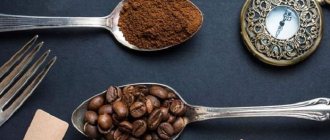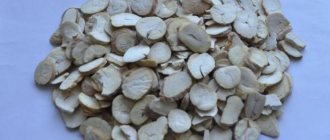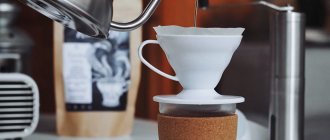One of the things you can do to enjoy your coffee is to roast your own beans. By roasting coffee at home, you can guarantee that every cup of coffee will be fresh. With a little practice, you can learn how to roast coffee to your liking.
While you can buy coffee at your local store, why not roast it yourself? Thanks to this, you can start making delicious coffee completely at home.
To roast coffee at home, you will need a few tools and green coffee beans. It's also important to understand the process from start to finish so you can understand how roasting affects the taste of your coffee.
What is coffee and why roast it?
The fruit of the coffee tree is actually a small red fruit.
Before coffee reaches your cup, it goes through a large number of processing steps. The first stage of coffee processing looks like this: the outer layer, pulp, and inner layer are removed. The inner seeds, also known as coffee beans, are then dried.
Once dried, the resulting green coffee beans are shipped all over the world. Only then are the grains roasted.
Coffee beans are similar to dry pinto beans. This means that the grains can be stored for a very long time. At the same time, they will remain fresh after frying. If the grains were not roasted, the drink would be bitter and sour, making it difficult to drink. Roasting imparts unique flavors and aromas to coffee.
Cooling roasted coffee
In order for the desired degree of roasting to be recorded, the grain must be cooled quickly. To do this, you need to quickly pour it into a cold metal baking sheet in one layer. At the same time, the grains should not come into contact with each other.
After the coffee has cooled, it must be placed in a suitable container and left for 10-12 hours, during which the beans “reach”. After which the grains are poured into an opaque, airtight container for storage. It is recommended to grind coffee immediately before preparing the drink.
What happens during the coffee roasting process?
During roasting, green coffee beans undergo a significant transformation. Moisture is extracted from the grains, causing them to dry and expand.
During this process, some natural carbohydrates are converted to carbon dioxide, while others are caramelized into flavors. This allows you to form a complex taste profile of coffee. At the end of roasting, the green beans turn brown. They are about 18% lighter, while being 50-100% larger in size.
As soon as the roasting process ends, the beans begin to release gas. Over 1-2 weeks, roasted coffee may lose some of its taste and aroma.
Subtleties and nuances
When roasting coffee, focus on sounds. It crackles because water is released and evaporated. At this moment the roasting begins.
Gradually the temperature increases, the grains dry out, and the sound becomes more intense.
The duration of the procedure affects the color of the grains. In 6-7 minutes they turn light brown. In 8-9 minutes they acquire a dark color.
The saturation of the drink depends on the color of the grains. Light ones have a mild taste, while dark ones have a bitter taste.
After 5-6 minutes of roasting, essential oils begin to release. They have a rich, persistent scent.
Interesting! What is the difference between a latte and a latte macchiato
How to roast coffee using a roaster
Currently, you can purchase various roasters that will help you roast coffee. The operating principle of these machines is similar to a device for making popcorn. A fast stream of hot air is used, which not only roasts the beans, but also keeps them moving.
This is one of the simplest methods of roasting coffee, with the roaster doing most of the dirty work.
- Place the required amount of beans into the roaster. You can determine the correct amount according to the instructions for the device.
- Close the roaster and turn it on.
- Let the coffee roast to the color you want. Don't forget: the longer the roasting process, the darker the beans will become and the stronger the flavor will be.
- Pour the coffee beans into a sieve and shake until the beans are warm, not hot.
- Store the resulting coffee beans at room temperature. At the same time, direct sunlight should not penetrate into the place of their storage.
Coffee beans from the manufacturer
Why is it worth buying freshly roasted coffee beans from us?
- Own production.
We purchased high-tech German roasters to fully control the roasting process; - Experience.
The Kavil company has been on the coffee market in Russia for more than seven years. During this time, we have earned the trust of regular customers from the capital and other regions of Russia. - Quality control.
To maximize flavor and aroma, we use a special proprietary roasting technology. Thanks to experienced specialists, Kavil carefully controls the quality of coffee beans and roasts them strictly according to technology; - Affordable prices.
We work without intermediaries, this allows us to sell freshly roasted coffee at reasonable prices; - Modern packaging.
We pack freshly roasted coffee in a vacuum bag with a valve, which plays a big role in preserving the quality of the product; - Delivery throughout Russia.
You can order coffee from anywhere in Russia, and we will definitely deliver the goods to you on time.
How to Roast Coffee Beans Using a Simple Popcorn Popper
Before modern coffee roasters and popcorn roasters were invented, people roasted beans over a burner. You will need a burner roaster. It is a pot with a lid that can be easily moved.
You will need:
- Burner popcorn maker from Whirley Pop.
- Burner (gas or electric).
- Unroasted coffee beans.
- Laser thermometer (optional).
- Baking tray.
- Sealed container.
Preparation. Preheating
Visit your local coffee shop and buy unroasted, green coffee beans. Feel free to ask for recommendations on how hot to roast your chosen beans. So, don’t be afraid to figure things out on your own, experiment, learn how to roast coffee according to your taste preferences.
Once you've purchased your grains, clear out the picnic table and set up the burner, popcorn popper, and baking sheet. Preheat the Whirley Pop; it should warm up to a temperature of about 200 degrees Celsius. The most convenient way to measure temperature is with a laser (infrared) thermometer. It should take about 5-10 minutes to warm up to the desired temperature.
Place coffee beans into the device
Once the popcorn maker has reached the desired temperature, pour in the unpopped kernels. Start turning the handle. It is necessary that the grains do not stop moving throughout the entire procedure, because this way they will roast more evenly. Therefore, the whole process needs to be cranked at a measured pace. Don’t forget: this is a business in which you need to put your whole soul.
Meanwhile, the beans will go through various stages of roasting. You will watch natural, unroasted coffee seeds transform into beautiful, aromatic, and full-flavored beans of your own making. Be careful, because it only takes a few minutes from perfectly roasted coffee beans to perfectly ruined ones.
Roast the coffee beans
During roasting, coffee beans go through several stages. You'll see them go from raw to something you can grind and make coffee from. Only you can decide what degree of doneness you are interested in. It is important to be attentive to the process in order to learn to control the taste of the future drink, master the procedure to perfection and, most importantly, not let the grains burn.
There are 10 stages in total. Try to determine each of them during the roasting process, without taking into account the last degree. It should be avoided, because it means that the grains have been overcooked.
Remove the grains and cool them
Once you have reached the roast level you are interested in, pour the coffee beans onto a baking sheet. Shake it. Let the grains cool under the influence of a natural breeze, and the delicious smells entering the neighbor's yard will make others jealous. Depending on how deep the roast was, you'll soon need to put the beans away in a storage area.
Place the grains in a storage container
Once the beans have cooled, they should be placed in a quality, airtight container. The best option is glass jars with screw caps, as they create an almost completely airtight environment. If your roast is a full New York roast or even darker, we recommend chilling the beans for 12 hours. This will allow the oils to release before packaging the product.
All that remains is to grind the beans, brew the coffee and enjoy the drink. In just 20 minutes, which the whole process takes, you will have delicious home-roasted coffee.
Wabash Valley Farms - Burner Popcorn Popper - Whirly Pop with Popcorn Popper Kit
Approximate cost: $26.99
Roast types
It is important to remember that the final taste and aroma properties of coffee are influenced by other factors besides roasting: the type and age of the beans, the region of their cultivation, storage method, etc.
During the roasting process, the chlorogenic acid contained in coffee decomposes into quinic and caffeic acid, and bitter chlorogenic acid lactones are simultaneously formed. During intense roasting, lactones decompose, resulting in the quintessence of bitterness - phenylindanes. Therefore, the more the coffee is roasted, the more intense the bitterness.
| Roasting degree | Temperature | Appearance of grains | Taste and aroma |
| Cinnamon Roast | +195 °C | Dry, light brown | Delicate, with the aroma of freshly baked bread and pronounced sourness |
| New England Roast, Light | +205 °C | Dry, slightly darker than in the previous case | There is still sourness, but without bread notes |
| American Roast | +210 °C | Dry, rich light brown color | Sourness combines with delicate bittersweet notes |
| City Roast | +220 °C | Dry, rich brown color | Bittersweet notes are felt more clearly, the sourness weakens. This roast is good for coffee tastings |
| Full City Roast | +225 °C | Rich brown color, with the first drops of oil on the surface | Shades of chocolate and caramel appear in the taste |
| Vienna Roast | +230 °C | Surface oily, color dark brown | The sourness disappears, the caramel tones become more intense |
| French Roast | +240 °C | Color – dark brown, more oil on the surface | Burnt tones are woven into caramel shades, and astringency appears. This roast is considered optimal for making espresso. |
| Italian Roast | +245 °C | The color is getting darker, there is more oil | The bitterness is felt more and more clearly. Roast suitable for espresso |
| Spanish Roast | +250 °C | Brown-black color, oily surface | Sharp bitter taste with notes of burnt coffee. Not all varieties can withstand this degree of roasting: some grains simply become charred. |
How to Roast Coffee Beans in a Popcorn Maker That Uses Hot Air
A popcorn popper is an easy way to roast coffee. This method is recommended for all beginners who want to roast their own beans to try.
The whole process only takes a few minutes, but you can experiment with the degree of roasting. You can make it both light and dark. You can even create something in between. When starting to practice coffee making, you can't underestimate roasting your own beans in a machine that has only been half-used for years.
You will need:
- A popcorn maker that uses hot air.
- A bowl.
- Unroasted coffee beans.
- Thermometer (optional).
- Baking tray.
- Sealed container.
Preparation. Preheating
To get started, collect everything on the list above. Contact your local coffee retailer to purchase raw, unroasted green beans. You can buy different types. Ask how deep frying is required in each case.
At home, you should make room on the kitchen table. You need to place a popcorn maker, a bowl (for the husks) and a baking sheet in which the grains will later cool. Turn on the popcorn. It should take about 30 seconds for the device to preheat.
Pour in coffee beans
Once the popcorn maker has warmed up, you can pour half a mug of coffee beans into the container. It will take about 5 minutes to completely fry. You need to keep an eye on how the beans go through the different stages of roasting. Never leave the popcorn maker unattended.
Roast the coffee beans
During roasting, the beans go through several levels. You'll see them go from raw to ready for grinding and brewing coffee. You can decide for yourself what degree of roasting you want to achieve. It is important to be attentive to the process in order to learn to control the taste of the future drink, master the procedure to perfection and, most importantly, not let the grains burn.
Remove the grains and cool them
When you reach your desired roast level, turn off the popcorn maker and pour the coffee beans onto a baking sheet. This will allow them to cool down quickly. To speed up this process, you can lightly shake the pan. Allow the beans to cool completely before transferring them to a storage container.
The main steps for preparing grains at home
It is clear that coffee roasting could be done to order, but this is a completely simple procedure that will not take much of your time. So, you need:
- Take a cast iron frying pan or an equally wide, thick-walled one, a baking sheet or a home roaster. Wash it all thoroughly; we don’t need any extra odors. A wooden spatula also needs to be processed; you will need it for stirring the grains.
- Prepare a place where you will cool the finished coffee. This could be a sheet of plywood or a baking sheet, which will also need to be cleaned.
- Next comes the turn of the green grains themselves, which should be washed under running water. The main goal of such an event is to get rid of the husks that may still cover the product in some places. You also get rid of dust, sand and other particles that could get on the coffee during transportation. The husk itself does not cause trouble. But dust and other substances clog the coffee grinder. Place the beans on a lint-free cloth to dry; you can lightly blow them with a fan to speed up the process.
- Once the grains are dry, you can start roasting. Turn on the hood and open the window. When roasting beans, smoke cannot be avoided, as well as a pleasant aroma. He is the one who will tell you that the coffee is ready.
- Pour the grains into your frying pan, in a layer about two fingers deep, and stir constantly. At the same time, set the fire to low; the green grains are fried over low heat. The preparation process lasts five minutes until the characteristic smell of coffee appears in the room.
- Put out the fire.
- After cooling, the grains should be transferred to a cool, dark place in the apartment so that they do not lose their beneficial qualities in a couple of days.











